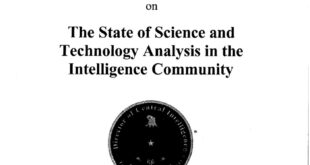The struggle between Iran and Saudi Arabia for dominance in the Middle East has insinuated itself into nearly every regional issue, fracturing international alliances and sustaining wars across the region, while raising fears of a direct conflict between the two powers.
Saudi Arabia has ramped up its regional adventurism since Mohammed bin Salman, the powerful son of King Salman known as MBS, was appointed crown prince in 2017. And it has cracked down on its opponents, including the brutal murder of journalist Jamal Khashoggi in October 2018 in the Saudi consulate in Istanbul. That appears to have had little effect on the crown prince’s increasingly close ties to the Trump administration, though. Determined to undermine the Iranian regime, Washington has pulled out of the nuclear deal with Tehran and used its economic might to suffocate Iran’s economy. Months of tensions over Iranian provocations, including a drone and cruise missile strike against Saudi oil facilities in September, culminated in January with the U.S. assassination of Iranian Gen. Qassem Soleimani in Iraq, followed by an Iranian ballistic missile barrage targeting U.S. troops there.
Though both sides quickly backed away from escalation to open warfare, the Middle East is rife with other ongoing conflicts, including a civil war in Yemen that has fueled one of the world’s worst humanitarian crises, another in Syria that may finally be reaching a no-less bloody endgame, and one in Libya that is once again escalating after a short-lived cease-fire. These conflicts exist on two levels: domestic battles for control of the countries’ futures, and proxy wars fueled by the regional powers, as well as Russia and—in the case of Libya—France.
Meanwhile, the long-simmering dispute between Israel and Palestine, which used to dominate international coverage, continues to flare up periodically. A round of fighting in May 2019 was the deadliest since 2014. And because the Trump administration’s peace plan, released in January, is designed more to legitimize the status quo than to move both sides to a sustainable resolution, it could ultimately prove destabilizing—especially if Israel follows through on plans to annex parts of the West Bank. Like everything else in the region, this conflict has also become embroiled in the larger power struggle, with Saudi-allied leaders willing to remain silent on the Palestinian issue in return for Israeli support in containing Iran. The U.S.-brokered diplomatic normalization deals Israel recently signed with the United Arab Emirates and Bahrain simply formalized and brought out into the open the strategic alignment that had until now been an open secret in the region.
WPR has covered the Middle East in detail and continues to examine key questions about what will happen next. Will the exchange of fire in January between the U.S. and Iran embolden hardliners on both sides? Will the Turkish-Russian proxy war in Libya be contained within its borders? And will Israel’s recent diplomatic normalization deals translate into deeper ties with the region’s Arab states? Below are some of the highlights of WPR’s coverage.
 Eurasia Press & News
Eurasia Press & News



